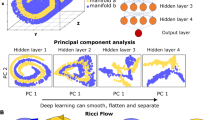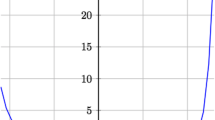
Overview
- Covers recent developments in deep learning and a wide spectrum of issues, with exercise problems for students
- Employs unified mathematical approaches with illustrative graphics to present various techniques and their results
- Closes the gap between the purely mathematical and implementation-oriented treatments of deep learning
Part of the book series: Mathematics in Industry (MATHINDUSTRY, volume 37)
Access this book
Tax calculation will be finalised at checkout
Other ways to access
About this book
The focus of this book is on providing students with insights into geometry that can help them understand deep learning from a unified perspective. Rather than describing deep learning as an implementation technique, as is usually the case in many existing deep learning books, here, deep learning is explained as an ultimate form of signal processing techniques that can be imagined.
To support this claim, an overview of classical kernel machine learning approaches is presented, and their advantages and limitations are explained. Following a detailed explanation of the basic building blocks of deep neural networks from a biological and algorithmic point of view, the latest tools such as attention, normalization, Transformer, BERT, GPT-3, and others are described. Here, too, the focus is on the fact that in these heuristic approaches, there is an important, beautiful geometric structure behind the intuition that enables a systematic understanding. A unified geometric analysis to understand the working mechanism of deep learning from high-dimensional geometry is offered. Then, different forms of generative models like GAN, VAE, normalizing flows, optimal transport, and so on are described from a unified geometric perspective, showing that they actually come from statistical distance-minimization problems.
Because this book contains up-to-date information from both a practical and theoretical point of view, it can be used as an advanced deep learning textbook in universities or as a reference source for researchers interested in acquiring the latest deep learning algorithms and their underlying principles. In addition, the book has been prepared for a codeshare course for both engineering and mathematics students, thus much of the content is interdisciplinary and will appeal to students from both disciplines.
Similar content being viewed by others
Keywords
Table of contents (15 chapters)
-
Front Matter
-
Basic Tools for Machine Learning
-
Front Matter
-
-
Building Blocks of Deep Learning
-
Front Matter
-
-
Advanced Topics in Deep Learning
-
Front Matter
-
-
Back Matter
Reviews
Authors and Affiliations
About the author
Bibliographic Information
Book Title: Geometry of Deep Learning
Book Subtitle: A Signal Processing Perspective
Authors: Jong Chul Ye
Series Title: Mathematics in Industry
DOI: https://doi.org/10.1007/978-981-16-6046-7
Publisher: Springer Singapore
eBook Packages: Mathematics and Statistics, Mathematics and Statistics (R0)
Copyright Information: The Editor(s) (if applicable) and The Author(s), under exclusive license to Springer Nature Singapore Pte Ltd. 2022
Hardcover ISBN: 978-981-16-6045-0Published: 06 January 2022
Softcover ISBN: 978-981-16-6048-1Published: 07 January 2023
eBook ISBN: 978-981-16-6046-7Published: 05 January 2022
Series ISSN: 1612-3956
Series E-ISSN: 2198-3283
Edition Number: 1
Number of Pages: XVI, 330
Number of Illustrations: 1 b/w illustrations
Topics: Functional Analysis, Differential Geometry, Artificial Intelligence, Mathematical Models of Cognitive Processes and Neural Networks, Mathematical and Computational Biology



